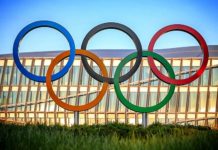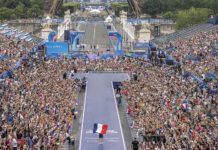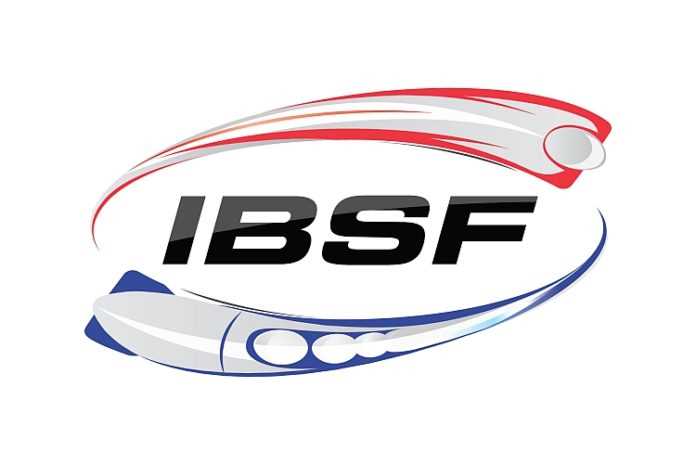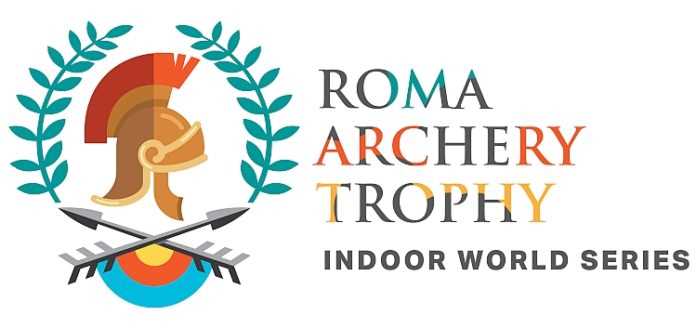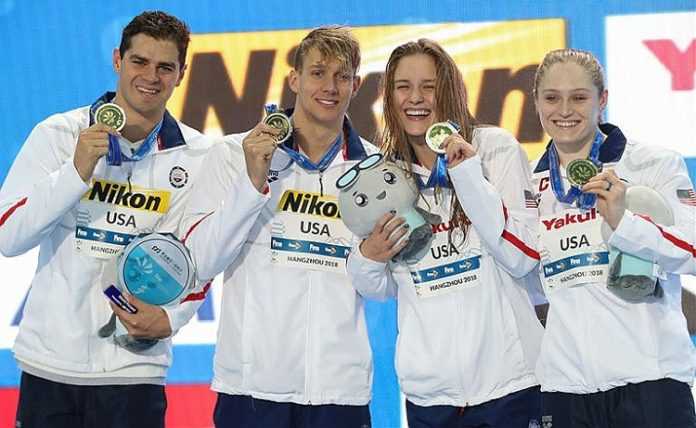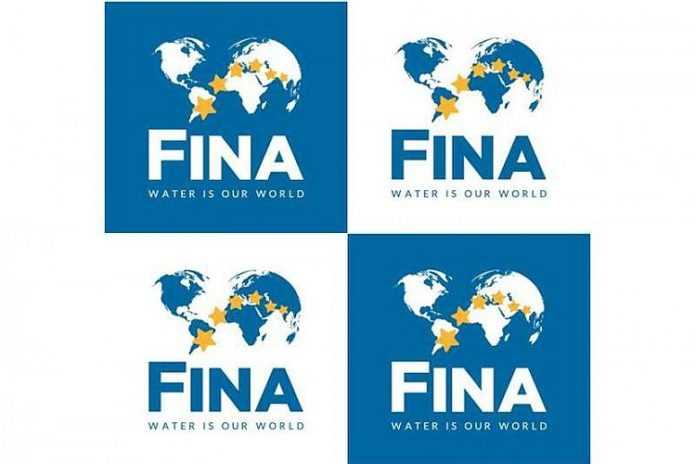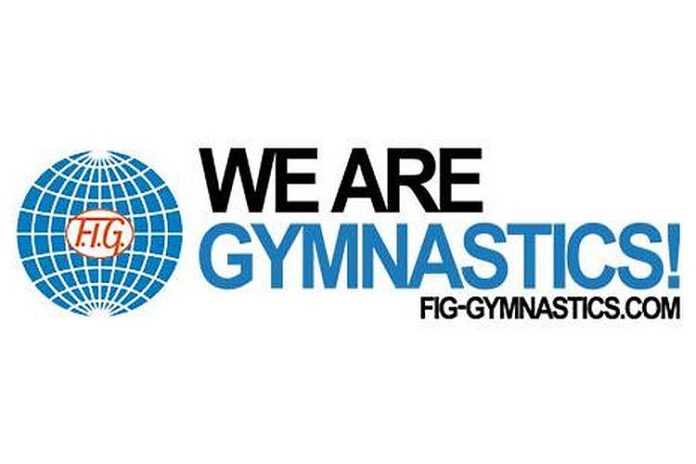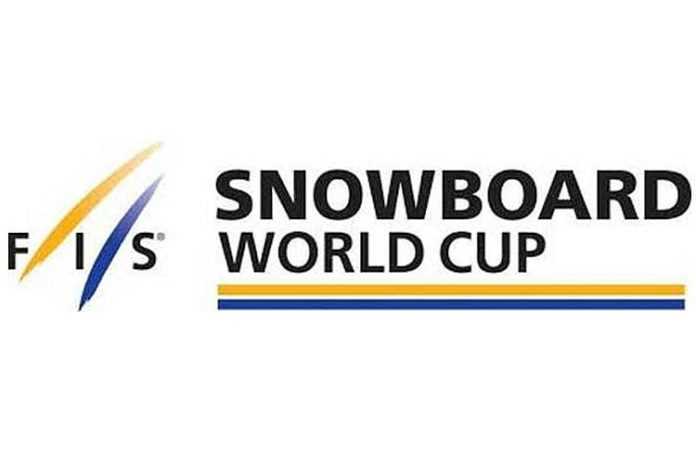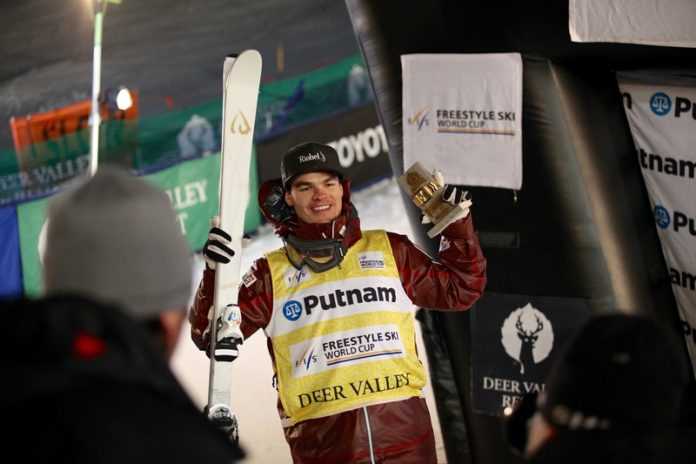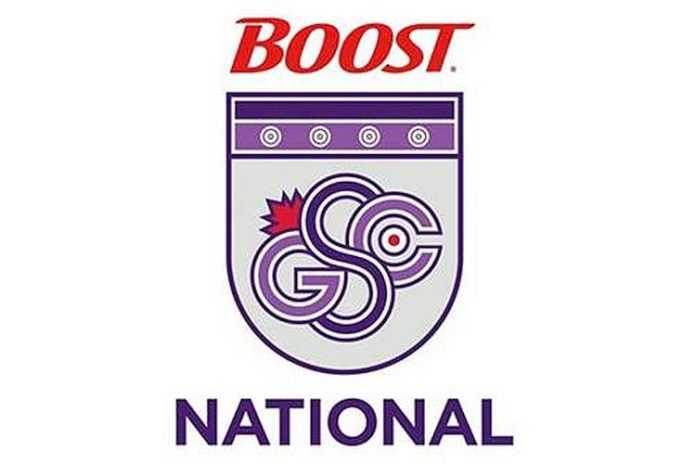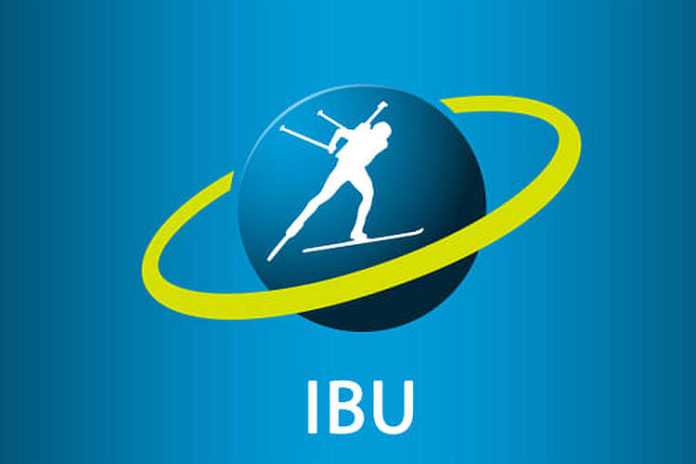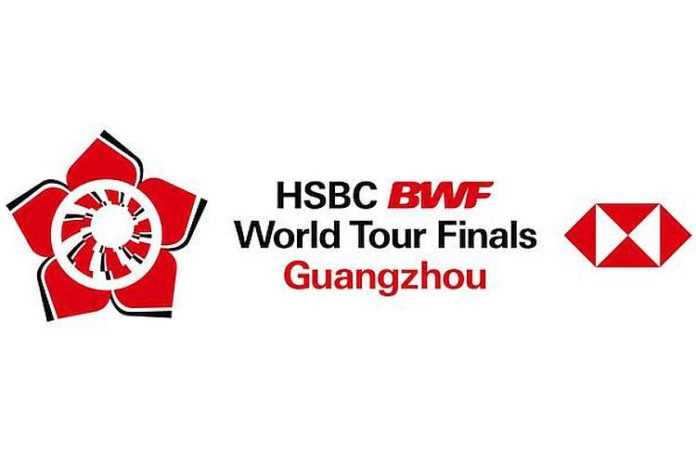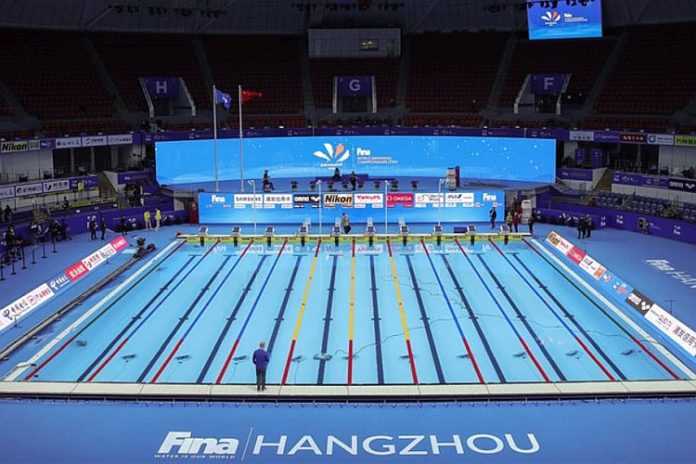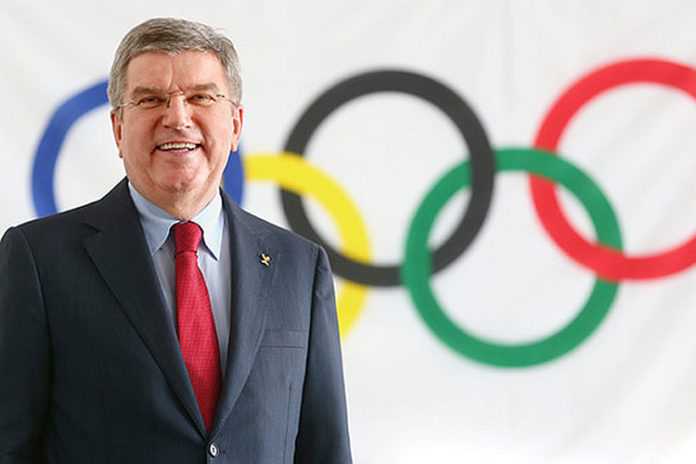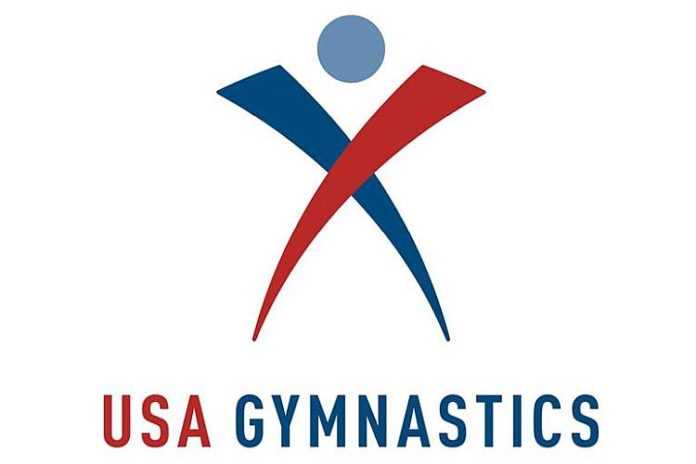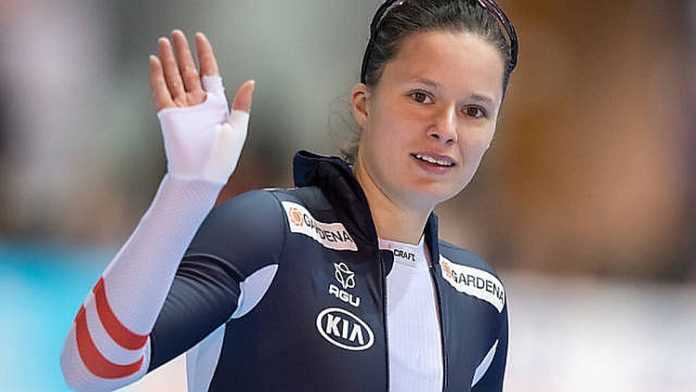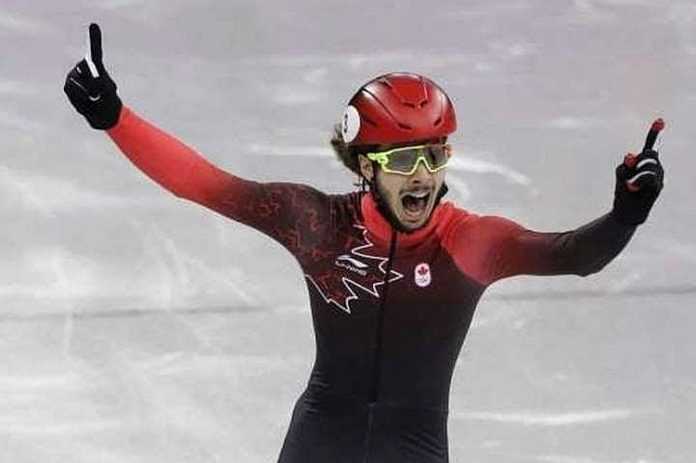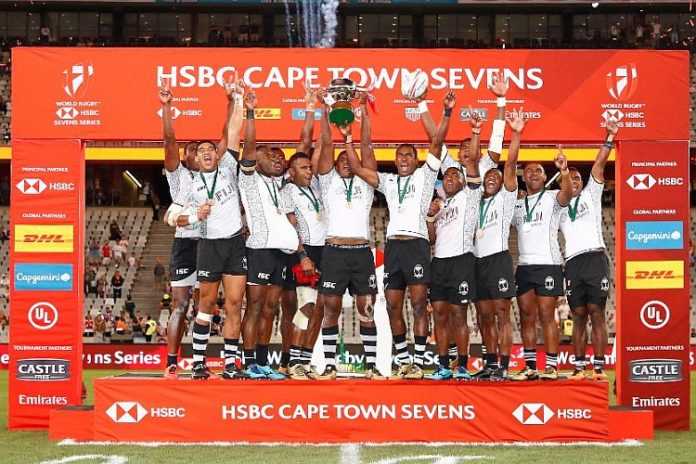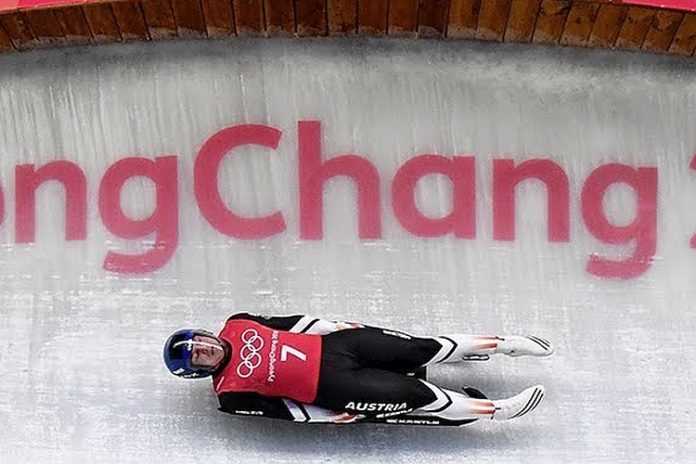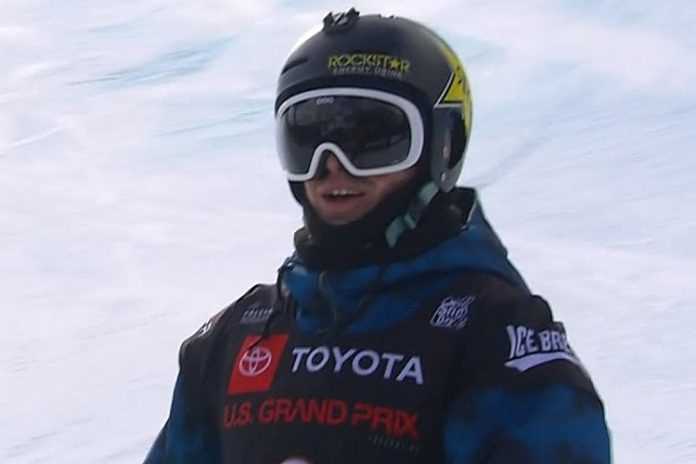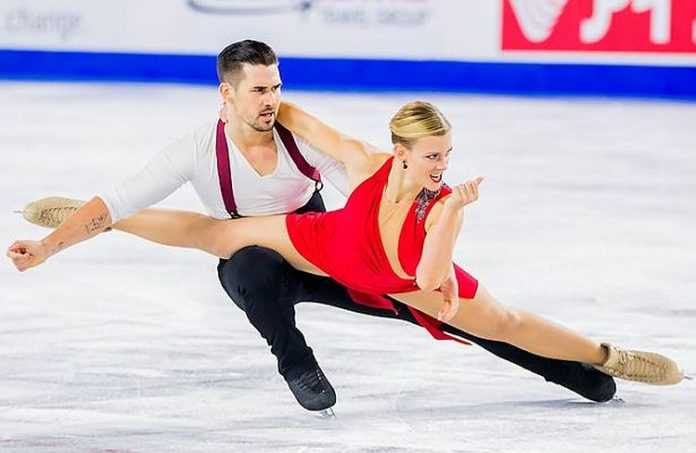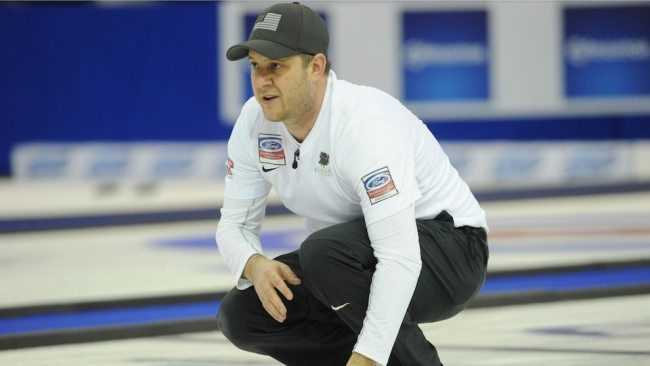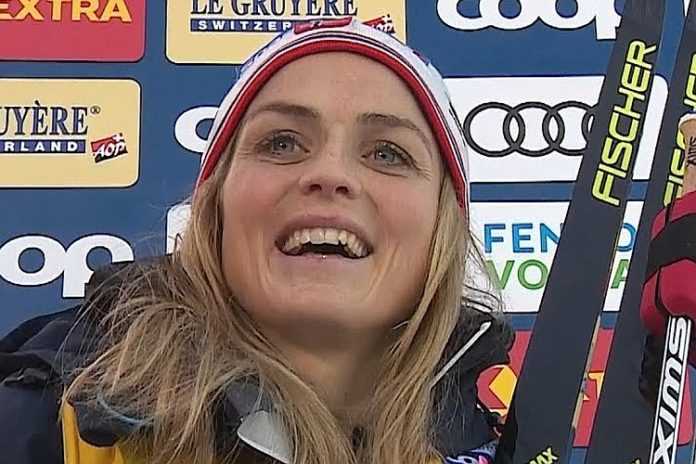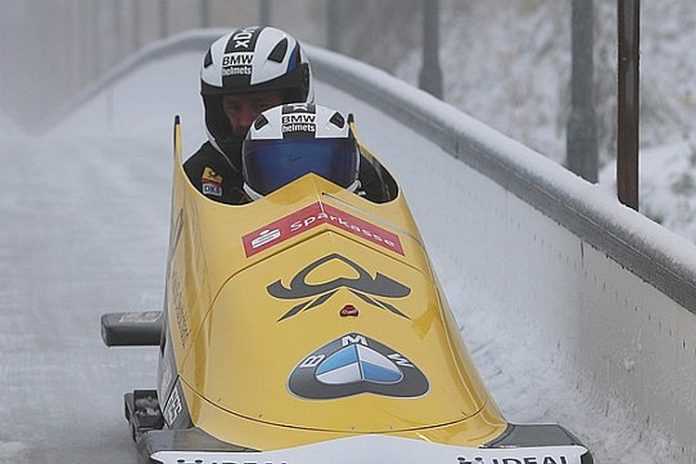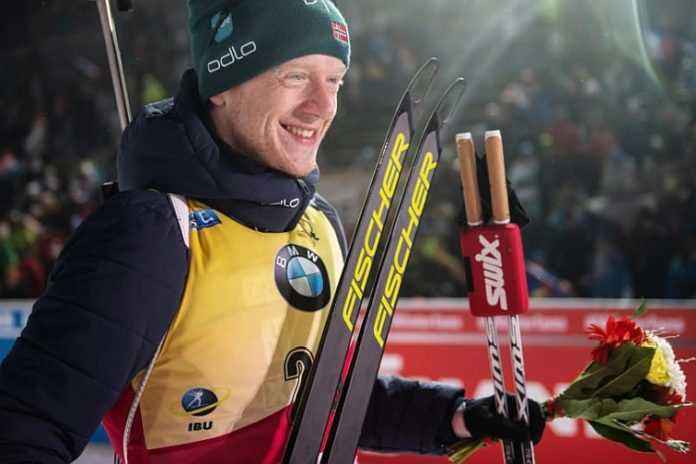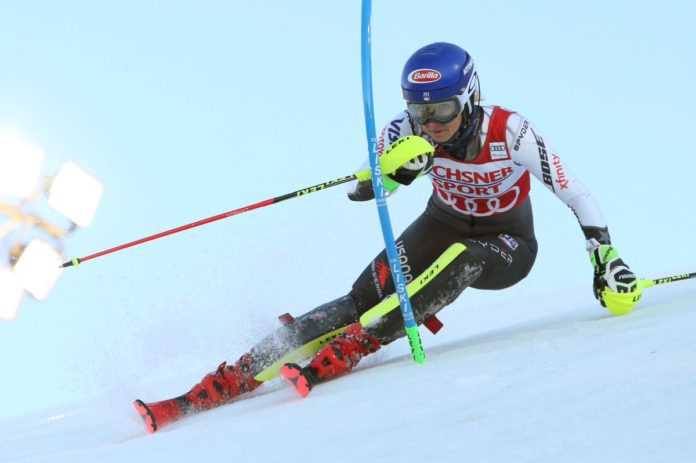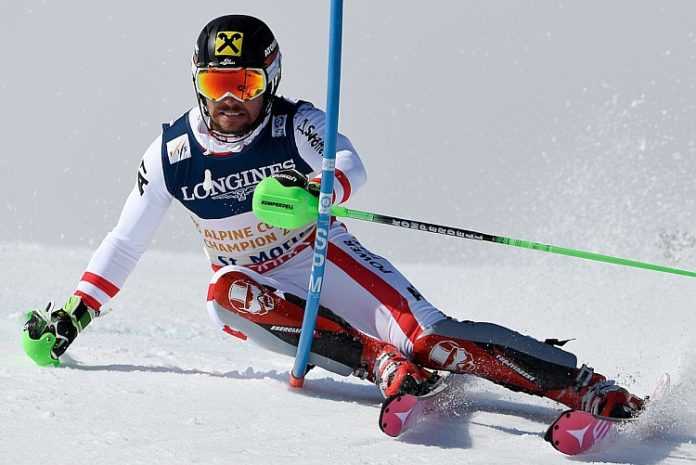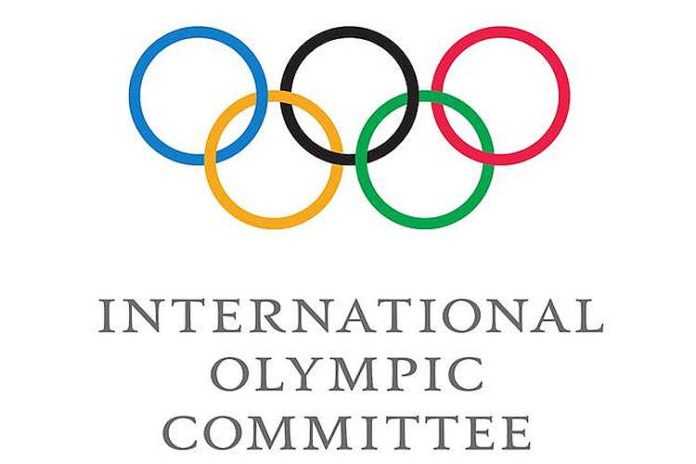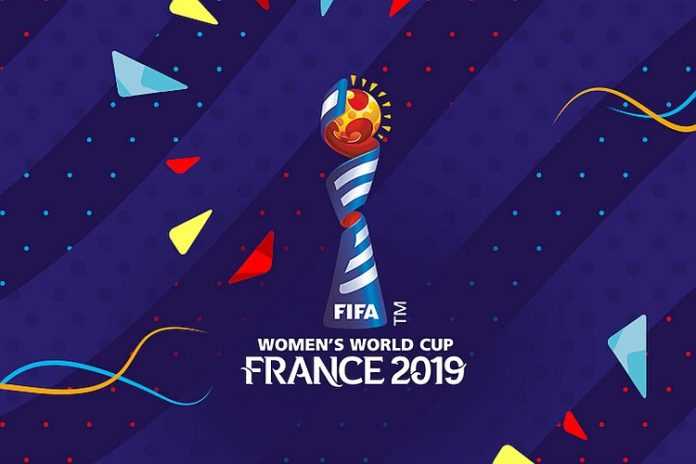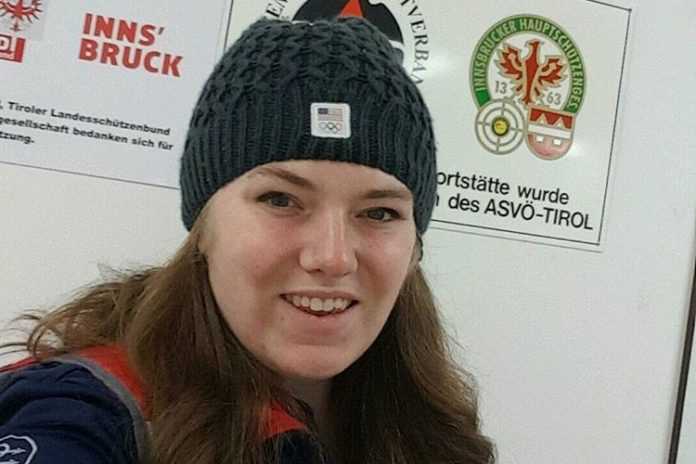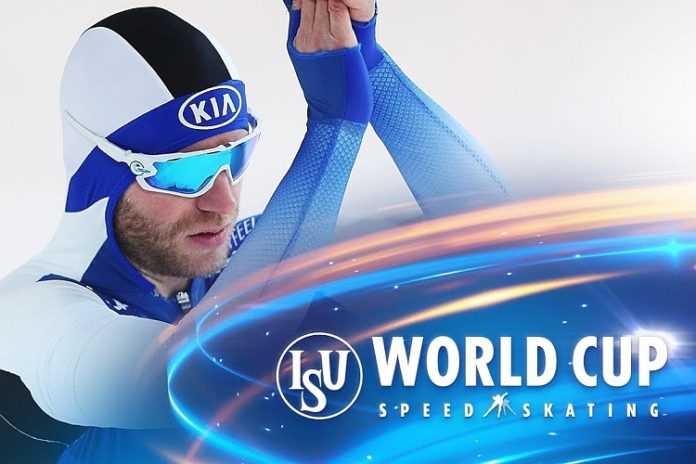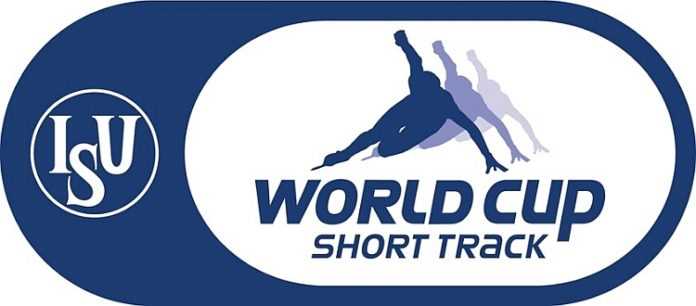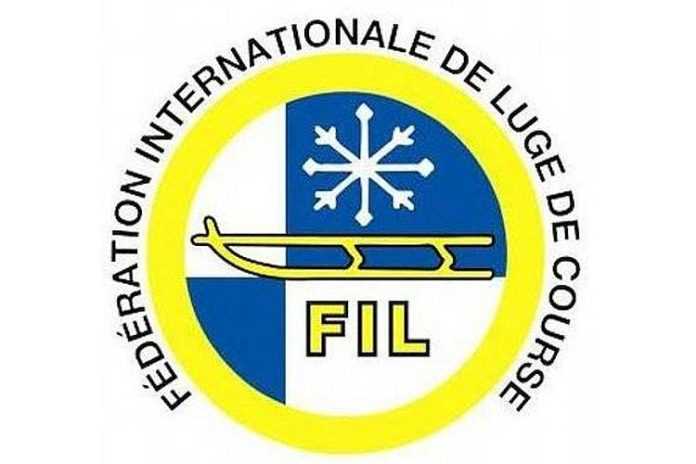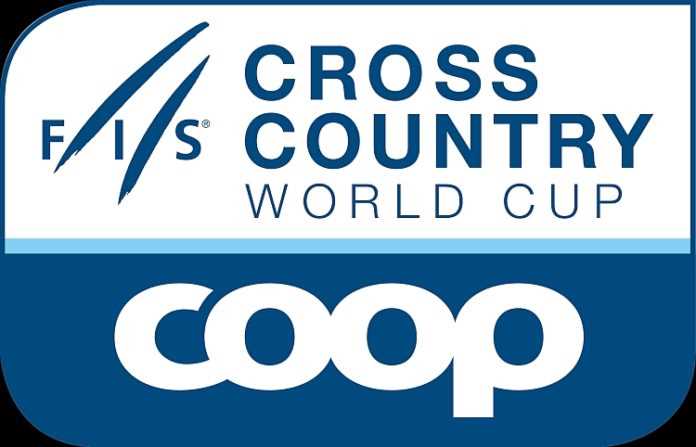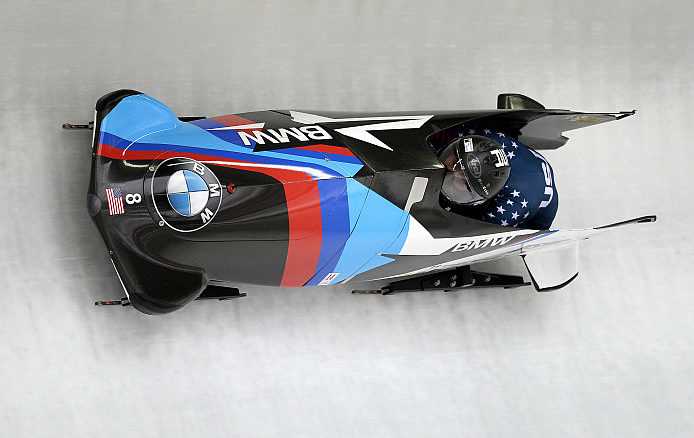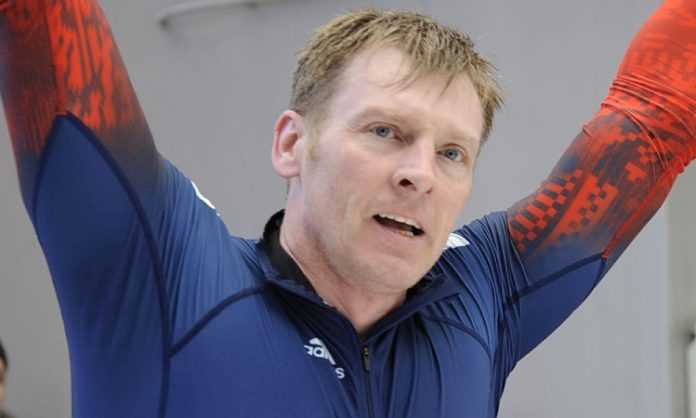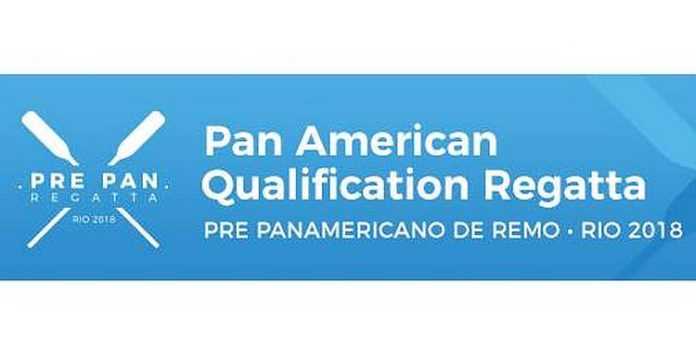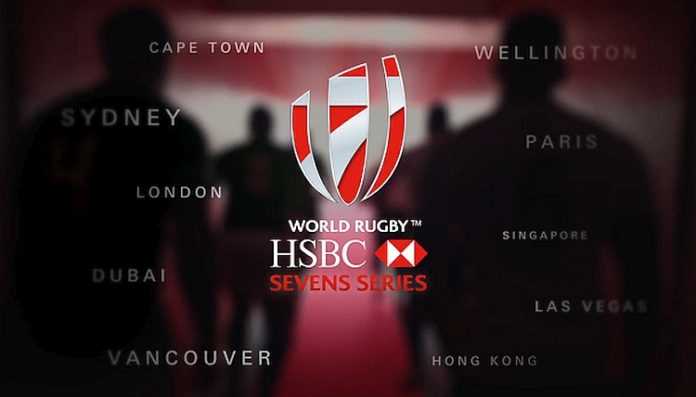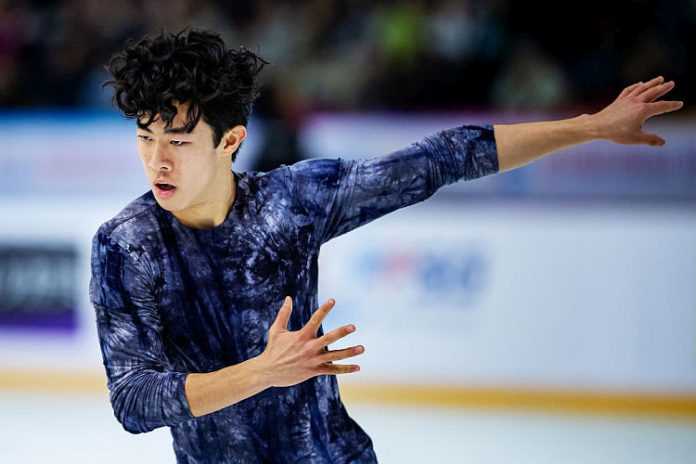World records are not usually set with this much frequency, but the truth is that high-level competition in short-course (25 m) pools doesn’t come around that often. So there is surprise – but not too much – for the tsunami of new world marks at the 14th FINA World Short-Course Championships in Hangzhou (CHN). So far, we have six, through the first three days of competition:
World Records:
∙ Men’s 200 m Breaststroke: 2:00.16, Kirill Prigoda (RUS)
∙ Men’s 200 m Medley: 1:48.24, Daiya Seto (JPN)
∙ Men’s 4×100 m Freestyle: 3:30.03, United States (Dressel, Pieroni, Chadwick, Held)
∙ Women’s 4×50 m Medley: 1:42.38, United States (Smoliga, Meili, Dahlia, Comerford)
∙ Mixed 4×50 m Freestyle: 1:27.89, United States (Dressel, Held, Comerford, Dahlia)
∙ Mixed 4×50 m Medley: 1:36.40, United States (Smoliga, Andrew, Dahlia, Dressel)
In addition, the high level of competition has allowed American swimmers to re-write the U.S. record books as well:
American Records (set in addition to the World Records above):
∙ Men’s 50 m Freestyle: 20.43, Caeleb Dressel (in relay final)
∙ Men’s 100 m Freestyle: 45.82, Ryan Held (in relay prelims)
· Men’s 100 m Freestyle: 45.66, Caeleb Dressel (in relay final)
∙ Women’s 100 m Freestyle: 51.63, Mallory Comerford
∙ Women’s 200 m Freestyle: 1:51.81, Mallory Comerford
∙ Women’s 100 m Backstroke: 55.47, Olivia Smoliga (in prelims)
∙ Women’s 50 m Butterfly: 24.93, Kelsi Dahlia (in semifinals)
∙ Women’s 200 m Butterfly: 2:01.73, Kelsi Dahlia
Four reigning champions have defended their 2016 victories: South Africa’s Chad le Clos in the men’s 100 m Fly; China’s Shun Wang in the men’s 200 m Medley, and Hungary’s Katinka Hosszu in the women’s 200 m Fly and 400 m Medley. The updated career stats on Hosszu are 15 World Short-Course titles and 25 medals (after a silver in the 100 m Back!).
South Africa’s Cameron van den Burgh won the 100 m Breaststroke in a meet-record time of 56.01 and then confirmed his retirement at age 30. It was the sixth gold medal at the Olympic (1), World (2) and World Short-Course (3) Championships for van den Burgh, who will now pursue a career in financial services. He was the 2012 Olympic Champion in the 100 Breaststroke and he won medals in championships from 2007-18.
The U.S. team, which does not include superstars such as Katie Ledecky and Simone Manuel, has piled up 17 medals (9-6-2) in the first half of this meet, ahead of China (8: 2-3-3) and the Netherlands (7: 1-4-2) at the top of the medal table. And there is more to come.
There is considerable prize money in this meet, with $2.07 million on offer; each event will pay $10,000-8,000-7,000-6,000-5,000-4,000-3,000-2,000 to the top eight finishers. World records command an extra $15,000.
There’s lots of coverage of the Worlds in the U.S. NBC’s Olympic Channel has coverage on Friday from 10:30 a.m.-12:30 p.m. (delayed) and 1-3 p.m. on NBCSN. On Saturday, The Olympic Channel starts at 9:30 a.m. Eastern (delayed) and on NBCSN at 9 p.m. Eastern. On Sunday, the Olympic Channel starts at 10 a.m. Eastern (delayed) with NBCSN’s replay at 11 p.m. Eastern. The full schedule is here. Summaries so far:
FINA World Short-Course Championships
Hangzhou (CHN) ~ 11-16 December 2018
(Full results here)
Men
200 m Freestyle: 1. Blake Pieroni (USA), 1:41.49; 2. Danas Rapsys (LTU), 1:41.78; 3. Alexander Graham (AUS), 1:42.28; 4. Xinjie Ji (CHN), 1:42.31; 5. Breno Correia (BRA), 1:42.36; 6. Martin Malyutin (RUS), 1:42.46; 7. Mikhail Vekovishchev (RUS), 1:42.67; 8. Luiz Melo (BRA), 1:42.72.
400 m Freestyle: 1. Danas Rapsys (LTU), 3:44.01 (Meet Record); 2. Henrik Christiansen (NOR), 3:36.64; 3. Gabriele Detti (ITA), 3:37.54; 4. Martin Malyutin (RUS), 3:37.75; 5. Aleksandr Krasnykh (RUS), 3:37.97; 6. Zane Grothe (USA), 3:38.99; 7. Wojciech Wojdak (POL), 3:39.22; 8. Fernando Scheffer (BRA), 3:39.40.
100 m Backstroke: 1. Ryan Murphy (USA), 49.23; 2. Jiayu Xu (CHN), 49.26; 3. Kliment Kolesnikov (RUS), 49.40; 4. Mitch Larkin (AUS), 49.46; 5. Guilherme Guido (BRA), 49.75; 6. Matt Grevers (USA), 50.02; 7. Christian Diener (GER), 50.24; 8. Robert Glinta (ROU), 50.36.
100 m Breaststroke: 1. Cameron van den Burgh (RSA), 56.01 (Meet Record); 2. Ilya Shymanovich (BLR), 56.10; 3. Yasuhiro Koseki (JPN), 56.13; 4. Fabio Scozzoli (ITA), 56.48; 5. Kirill Prigoda (RUS), 56.56; 6. Lizhuo Wang (CHN), 56.91; 7. Arno Kamminga (NED), 57.10; 8. Andrew Wilson (USA), 57.19.
200 m Breast: 1. Prigoda (RUS), 2:00.16 (World Record; old, 2:00.44, Marco Koch (GER), 2016); 2. Haiyang Qin (CHN), 2:01.15; 3. Marco Koch (GER), 2:01.42; 4. Koseki (JPN), 2:01.18; 5. Josh Prenot (USA), 2:03.12; 6. Mikhail Dorinov (RUS), 2:03.20; 7. Kamminga (FIN), 2:03.72; 8. Erik Persson (SWE), 2:04.15.
100 m Butterfly: 1. Chad le Clos (RSA), 48.50; 2. Caeleb Dressel (USA), 48.71; 3. Zhohao Li (CHN), 49.25; 4. Mehdy Metella (FRA), 49.45; 5. Marius Kusch (GER), 49.50; 6. Takeshi Kawamoto (JPN), 50.07; 7. Jack Conger (USA), 50.32; 8. Piero Codia (ITA), 50.71.
200 m Fly: 1. Daiya Seto (JPN), 1:48.24 (World Record; 1:48.56, Chad le Clos (RSA), 2013); 2. le Clos (RSA), 1:48.32 (also under old World Record!); 3. Li (CHN), 1:50.39; 4. Aleksandr Kharlanov (RUS), 1:50.67; 5. Zach Hartung (USA), 1:51.57; 6. Luiz Melo (BRA), 1:51.99; 7. Nic Brown (AUS), 1:52.10; 8. Antani Ivanov (BUL), 1:52.40.
200 m Medley: 1. Shun Wang (CHN), 1:51.01; 2. Josh Prenot (USA), 1:52.69; 3. Hiromasa Fujimori (JPN), 1:52.73; 4. Mitch Larkin (AUS), 1:52.78; 5. Caio Pumputis (BRA), 1:53.05; 6. Leonardo Coehlo Santos (BRA), 1:53.38; 7. Jan Switkowski (POL), 1:53.96; 8. Bradlee Ashby (NZL), 1:54.01.
4×100 m Freestyle: 1. United States (Caeleb Dressel, Blake Pieroni, Michael Chadwick, Ryan Held), 3:03.03 (World Record; old, 3:30.30, United States, 2009; Dressel’s 45.66 lead-off is an American Record; old, 45.82, Held, in heats); 2. Russia (Grinev, Fesikov, Morozov, Kolesnikov), 3:03.11 (also under old World Record!); 3. Brazil (Santana, Chierighini, Cielo Filho, Correia), 3:05.15; 4. Italy, 3:05.20; 5. Australia, 3:06.49; 6. Japan, 3:07.87; 7. China, 3:10.55; 8. Belarus, 3:10.59.
Women
100 m Freestyle: 1. Ranomi Kromowidjojo (NED), 51.14 (Meet Record); 2. Femke Heemskerk (NED), 51.60; 3. Mallory Comerford (USA), 51.63 (American Record; old, 51.69, Simone Manuel, 2015); 4. Michelle Coleman (SWE), 52.24; 5. Menghui Zhu (CHN), 52.40; 6. Barbora Seemanova (CZE), 52.46; 7. Lia Neal (USA), 52.50; 8. Erin Gallagher (RSA), 53.14.
200 m Free: 1. Ariarne Titmus (AUS), 1:51.38; 2. Mallory Comerford (USA), 1:51.81 (American Record; old, 1:52.52, Comerford, 2018); 3. Heemskerk (NED), 1:52.36; 4. Federica Pellegrini (ITA), 1:53.18; 5. Jianjiahe Wang (CHN), 1:53.23; 6. Coleman (SWE), 1:53.83; 7. Veronika Andrusenko (RUS), 1:54.26; 8. Seemanova (CZE), 1:54.82.
800 m Free: 1. Wang (CHN), 8:04.35; 2. Simona Quadarella (ITA), 8:08.03; 3. Leah Smith (USA), 8:08.75; 4. Bingjie Li (CHN), 8:09.81; 5. Sarah Kohler (GER), 8:10.54; 6. Anna Egorova (RUS), 8:12.65; 7. Haley Anderson (USA), 8:18.70; 8. Mayuko Goto (JPN), 8:22.10.
100 m Backstroke: 1. Olivia Smoliga (USA), 56.19; 2. Katinka Hosszu (HUN), 59.26; 3. tie, Georgia Davies (GBR) and Minna Atherton (AUS), 56.74; 5. Kathleen Baker (USA), 56.89; 6. Emily Seebohm (AUS), 56.98; 7. Simona Kubova (CZE), 57.03; 8. Emi Moronuki (JPN), 57.18.
200 m Back: 1. Lisa Bratton (USA), 2:00.71; 2. Baker (USA), 2:00.79; 3. Seebohm (AUS), 2:01.37; 4. Hosszu (HUN), 2:01.99; 5. Margherita Panziera (ITA), 2:02.50; 6. Daria K. Ustinova (RUS), 2:02.96; 7. Sayaka Akase (JPN), 2:03.92; 8. Moronuki (JPN), 2:05.80.
50 m Breaststroke: 1. Alia Atkinson (JAM), 29.05; 2. Ruta Meilutyte (LTU), 29.38; 3. Martina Carraro (ITA), 29.59; 4. Jenna Laukkanen (FIN), 29.68; 5. Katie Meili (USA), 29.89; 6. Jessica Hansen (AUS), 30.20; 7. Fanny Lecluyse (BEL), 30.41; 8. Ida Hulkko (FIN), 30.45.
200 m Butterfly: 1. Katinka Hosszu (HUN), 2:01.60; 2. Kelsi Dahlia (USA), 2:01.73 (American Record; old, 2:02.89, Dahlia [as Kelsi Worrell], 2016); 3. Suzuka Hasegawa (JPN), 2:04.04; 4. Lara Grangeon (FRA), 2:04.91; 5. Ilaria Bianchi (ITA), 2:05.57; 6. Ana Monteiro (POR), 2:05.74; 7. Yufei Zhang (CHN), 2:05.86; 8. Nao Kobayashi (JPN), 2:06.24.
400 m Medley: 1. Katinka Hosszu (HUN), 4:21.40; 2. Melanie Margalis (USA), 4:25.84; 3. Fantina Lesaffre (FRA), 4:27.31; 4. Ilaria Cusinato (ITA), 4:27.88; 5. Lara Grangeon (FRA), 4:29.56; 6. Sakiko Shimizu (JPN), 4:31.07; 7. Catalina Corro (ESP), 4:31.63; 8. Miho Takahashi (JPN), 4:35.62.
4×100 m Freestyle: 1. United States (Olivia Smoliga, Lia Neal, Mallory Comerford, Kelsi Dahlia), 3:27.78; 2. Netherlands (Busch, Heemskerk, de Waard, Kromowidjojo), 3:28.02; 3. China (Zhu, Yang, Liu, Wang), 3:30.92; 4. Japan, 3:31.68; 5. Russia, 3:32.48; 6. Germany, 3:33.27; 7. Hong Kong, 3:40.25; 8. Turkey, 3:41.25.
4×50 m Medley: 1. United States (Olivia� Smoliga, Katie Meili, Kelsi Dahlia, Mallory Comerford), 1:42.38 (World Record; old, 1:43.27, United States, 2016); 2. China (Fu, Suo, Wang, Wu), 1:44.31; 3. Netherlands (de Waard, Busch, Kromowidjojo, Heemskerk), 1:44.57; 4. Japan, 1:44.90; 5. Australia, 1:45.79; 6. Russia, 1:45.98; 7. Czech Rep., 1:46.17; 8. Italy, 1:46.44.
Mixed
4×50 m Freestyle: 1. United States (Caeleb Dressel, Ryan Held, Mallory Comerford, Kelsi Dahlia), 1:27.89 (World Record; old, 1:28.39, Netherlands, 2017); 2. Netherlands (Puts, Pijnenburg, Kromowidjojo, Heemskerk), 1:28.51; 2. Russia (Morozov, Sedov, Kemaneva, Nasretdinova), 1:28.73; 4. Japan, 1:29.51; 5. Brazil, 1:29.91; 6. Australia, 1:30.09; 7. Italy, 1:30.96; 8. Finland, 1:31.23.
4×50 m Medley: 1. United States (Olivia Smoliga, Michael Andrew, Kelsi Dahlia, Caeleb Dressel), 1:36.40 (World Record; old, 1:37.17, United States, 2013); 2. Netherlands (Puts, Elzerman, Kromowidjojo, Heemskerk), 1:37.05; 3. Russia (Kolesnikov, Kostin, Nasretdinova, Kameneva), 1:37.33; 4. Japan, 1:37.67; 5. Italy, 1:38.08; 6. Germany, 1:38.35; 7. Australia, 1:38.69; 8. Finland, 1:39.38.




